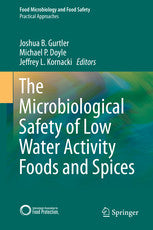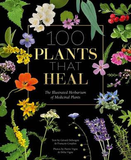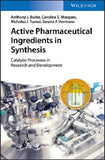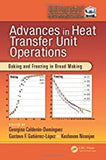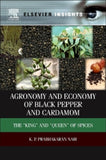The Microbiological Safety of Low Water Activity Foods and Spices by Herausgeber: Gurtler, Joshua B., Doyle, Michael P., Kornacki, Jeffrey L. (Eds.)
- Describes the microbial challenges to ensuring the safety of low water activity (aw) food
Low water activity (aw) and dried foods such as dried dairy and meat products, grain-based and dried ready-to-eat cereal products, powdered infant formula, peanut and nut pastes, as well as flours and meals have increasingly been associated with product recalls and foodborne outbreaks due to contamination by pathogens such as Salmonella spp. and enterohemorrhagic E. coli. In particular, recent foodborne outbreaks and product recalls related to Salmonella-contaminated spices have raised the level of public health concern for spices as agents of foodborne illnesses. Presently, most spices are grown outside the U.S., mainly in 8 countries: India, Indonesia, China, Brazil, Peru, Madagascar, Mexico and Vietnam. Many of these countries are under-developed and spices are harvested and stored with little heed to sanitation. The FDA has regulatory oversight of spices in the United States; however, the agency’s control is largely limited to enforcing regulatory compliance through sampling and testing only after imported foodstuffs have crossed the U.S. border. Unfortunately, statistical sampling plans are inefficient tools for ensuring total food safety. As a result, the development and use of decontamination treatments is key.
This book provides an understanding of the microbial challenges to the safety of low aw foods, and a historic backdrop to the paradigm shift now highlighting low aw foods as vehicles for foodborne pathogens. Up-to-date facts and figures of foodborne illness outbreaks and product recalls are included. Special attention is given to the uncanny ability of Salmonella to persist under dry conditions in food processing plants and foods. A section is dedicated specifically to processing plant investigations, providing practical approaches to determining sources of persistent bacterial strains in the industrial food processing environment. Readers are guided through dry cleaning, wet cleaning and alternatives to processing plant hygiene and sanitation. Separate chapters are devoted to low aw food Commodities of interest including spices, dried dairy-based products, low awmeat products, dried ready-to-eat cereal products, powdered infant formula, nuts and nut pastes, flours and meals, chocolate and confectionary, dried teas and herbs, and pet foods. The book provides regulatory testing guidelines and recommendations as well as guidance through methodological and sampling challenges to testing spices and low aw foods for the presence of foodborne pathogens. Chapters also address decontamination processes for low aw foods, including heat, steam, irradiation, microwave, and alternative energy-based treatments.
of interest including spices, dried dairy-based products, low awmeat products, dried ready-to-eat cereal products, powdered infant formula, nuts and nut pastes, flours and meals, chocolate and confectionary, dried teas and herbs, and pet foods. The book provides regulatory testing guidelines and recommendations as well as guidance through methodological and sampling challenges to testing spices and low aw foods for the presence of foodborne pathogens. Chapters also address decontamination processes for low aw foods, including heat, steam, irradiation, microwave, and alternative energy-based treatments.
TABLE OF CONTENTS :
Part I Introduction and Overview
The Microbiological Safety of Spices and Low-Water Activity Foods: Correcting Historic Misassumptions................................... 3
Joshua B. Gurtler, Michael P. Doyle, and Jeffrey L. Kornacki
Challenges in the Control of Foodborne Pathogens in Low-Water Activity Foods and Spices....................................................... 15
Sofia M. Santillana Farakos and Joseph F. Frank
Part II Pathogen Persistence and Control in Low aw Foods and Processing Plants
Adaptation of Pathogenic Microorganisms to Dry Conditions................... 37
Pieter Breeuwer
Transcriptomic Responses of Salmonella Species to Desiccation and Low-Moisture Environments: Extending Our Knowledge of How Bacteria Cope with Low-Moisture Stress......................................... 49
Sarah Finn, Peter McClure, Alejandro Amézquita,
and Séamus Fanning
Processing Plant Investigations: Practical Approaches to Determining Sources of Persistent Bacterial Strains in the Industrial Food Processing Environment............................................ 67
Jeffrey L. Kornacki
Dry Cleaning, Wet Cleaning, and Alternatives to Processing Plant Hygiene and Sanitation......................................................................... 85
Scott L. Burnett and Robert Hagberg
Part III Low aw Food Commodities of Interest
Spices................................................................................................................. 99
Joan M. Pinkas and Susanne E. Keller
Dried Dairy-Based Products........................................................................... 115
Jeffrey L. Kornacki and Greg Desautels
Low-Water Activity Meat Products............................................................... 127
Peter J. Taormina and John N. Sofos
Dried Ready-to-Eat Cereal Products............................................................. 165
Scott K. Hood
Powdered Infant Formula............................................................................... 177
Stephen Forsythe
Nuts and Nut Pastes......................................................................................... 213
John C. Frelka and Linda J. Harris
Flour and Meal................................................................................................. 245
Deann Akins-Lewenthal
Chocolate and Confectionary.......................................................................... 269
David C. Bean and Laurie S. Post
Salty Snack Foods............................................................................................ 295
Jeff Kuehm and Diana Casas
Pet Foods........................................................................................................... 315
Bradley A. Stawick and Jeffrey L. Kornacki
Dried Teas and Herbs...................................................................................... 329
Li Maria Ma, Shefali Dobhal, and Chris Timmons
Part IV Product Testing
Regulatory Testing Guidelines and Recommendations................................ 347
Warren E. Stone
Methodological and Sampling Challenges to Testing Spices and Low-Water Activity Food for the Presence of Foodborne Pathogens.................................................................................. 367
Jean-Louis Cordier
Part V Low aw Food Decontamination
Irradiation, Microwave, and Alternative Energy-Based Treatments for Low-Water Activity Foods.................................................... 389
Brendan A. Niemira
Heat and Steam Treatments............................................................................ 403
Elizabeth M. Grasso, Christina N. Stam, Nathan M. Anderson,
and Kathiravan Krishnamurthy
Part VI Research Needs
Research Gaps and Needs Pertaining to Microbial Pathogens in Spices and Low-aw Foods............................................................................ 427
Margaret Hardin
Index.................................................................................................................. 441

